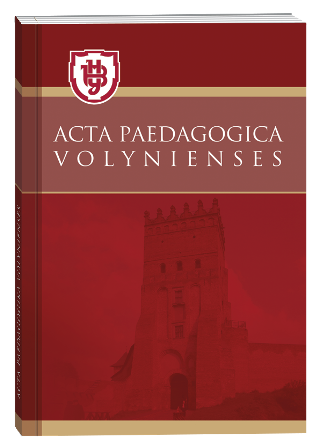HATE SPEACH AND CYBERBULLYING: HOW TO WARN YOUNG SCHOOL STUDENTS ABOUT THE DANGER
DOI:
https://doi.org/10.32782/apv/2023.1.12Keywords:
кіберзагрози, здобувачі початкової освіти, мова ворожнечі, кібербулінг, методика ознайомлення, попередженняAbstract
The article provides a theoretical justification of such Internet threats as hate speech and cyberbullying and offers methodical techniques for familiarizing primary school students with them. The relevance of the raised problem is caused by a significant increase in the number of fraudulent actions, organized psychological influence and other methods of conscious or unconscious criminal activity, to which children are especially vulnerable. Only a trained person who knows the correct algorithm of actions in certain dangerous situations, when interacting with other Internet users or the materials posted on it, can recognize such threats and be able to counter them. It is determined that hate speech is any communication or behavior that manifests itself in humiliating people based on characteristics that they cannot and should not change. The identified phenomenon harms victims and society, turning into a common practice of communication on the Internet, which destroys respect for human dignity. Examples of the work of teachers in this direction during morning meetings or educational hours, which consist in cultivating tolerance in students of primary education, developing in them the skills of responding to the incorrect behavior of other Internet users, and forming an active civic position, are considered. Cyberbullying is analyzed as a systematic behavior aimed at intimidating, provoking anger or insulting a person using digital technologies. As the internet expands the scope of cyberbullying, it leaves digital footprints – evidence that can stop the bullying and bring the bully to justice. The essence of propaedeutic work in elementary school consists in familiarizing children with the essence of the problem, the signs of cyberbullying, developing a resistance strategy and raising awareness of the degree of legal responsibility for the systematic humiliation of another person’s dignity. It was concluded that when working with children of primary school age, the delivery of information with a propaedeutic purpose should be dosed so as not to cause the opposite effect of interest.
References
Биков В.Ю., Буров О.Ю., Дементієвська Н.П. Кібербезпека в цифровому навчальному середовищі. Інформаційні технології і засоби навчання. 2019. Том 70. № 2. С. 313–331.
Кислова О., Кузіна І., Дирда І. Дослідження онлайнової мови ворожнечі щодо ромської меншини в українському інтернет-просторі. IDEOLOGY AND POLITICS. 2020. № 2(16). С. 252–278.
Кін Е., Георгеску М., Гомес Р. Закладинки. Посібник з протидії мові ненависті онлайн через освіту з прав людини. Київ: Council of Europe, 2016. 212 с.
Колесник Г.О. «Мова ворожнечі» як соціальний та лінгвістичний феномен. Вчені записки ТНУ імені В. І. Вернадського. Серія: Філологія. Журналістика. 2021. Том 32 (71). № 4. Ч. 3. С. 278–283. URL: https://doi.org/10.32838/2710-4656/2021.4-3/46
Кочарян А.Б., Гущина Н.І. Виховання культури користувача Інтернету. Безпека у всесвітній мережі: навч.- метод. посіб. Київ, 2011. 100 с.
Литовченко І., Максименко С., Болтівець С., Чепа М., Бугайова Н. Діти в Інтернеті: як навчити безпеці у віртуальному світі: посібник для батьків. Київ: ТОВ Аванпост-Прим, 2010. 48 с.
Мединська К. Сучасні технології: корисно чи шкідливо? Виховний захід для 3-4-их класів. Початкова освіта. 2017. № 11. С. 41–44.
Методичні рекомендації щодо формування безпечної поведінки дітей у соціальних мережах/авт. кол.: В. В. Сокуренко, Д. В. Швець, О. І. Федоренко та ін. Харків: ХНУВС, 2021. 60 с.
Найдьонова Л.А. Цифрові ризики в умовах дистанційної освіти в часи пандемії. Вісник НАПН України. 2021. № 3(1). URL: https://doi.org/10.37472/2707-305X-2021-3-1-13-3
Печерна А., Бєглов В. Що треба знати про мову ворожнечі вчителям, батькам і дітям. Освіторія. 2020. URL: https://osvitanova.com.ua/posts/4475-shcho-treba-znaty-pro-movu-vorozhnechi-vchyteliam-batkam-i-ditiam (дата звернення 11.01.2023).
Протидія булінгу в закладі освіти: системний підхід: метод. посіб./Андрєєнкова В.Л., Мельничук В.О., Калашник О.А. Київ: ТОВ «Агентство «Україна», 2019. 132 с.
Сексуальне насильство над дітьми та сексуальна експлуатація дітей в Інтернеті в Україні: аналітичний звіт по результатам кількісного дослідження. 2021. URL: https://nus.org.ua/wp-content/uploads/2021/03/Zvit-Seksualnenasylstvo-nad-ditmy-ta-seksualna-ekspluatatsiya-ditej-v-Interneti-v-Ukrayini.pdf (дата звернення 11.01.2023).
Чемоніна Л.В. Медіаграмотність майбутніх учителів початкової школи: практичний аспект. Молодь і ринок. 2022. № 3-4/201-202. С. 87–92. URL: https://doi.org/10.24919/2308-4634.2022.259954
Як захиститися від кібербулінгу: буклет. Київ: ВГЦ «Волонтер», Представництво Дитячого фонду ООН (ЮНІСЕФ) в Україні, 2021. 12 с. URL: https://www.unicef.org/ukraine/cyberbulling (дата звернення 29.01.2023).
Янішевська К.Д., Зінченко Г.С. Запобігання кібербулінгу, кібермобінгу, кібергрумінгу в Україні. Юридичний науковий електронний журнал. 2022. № 2. С. 132–135. URL: https://doi.org/10.32782/2524-0374/2022-2/29







